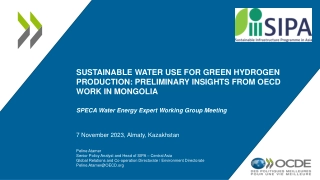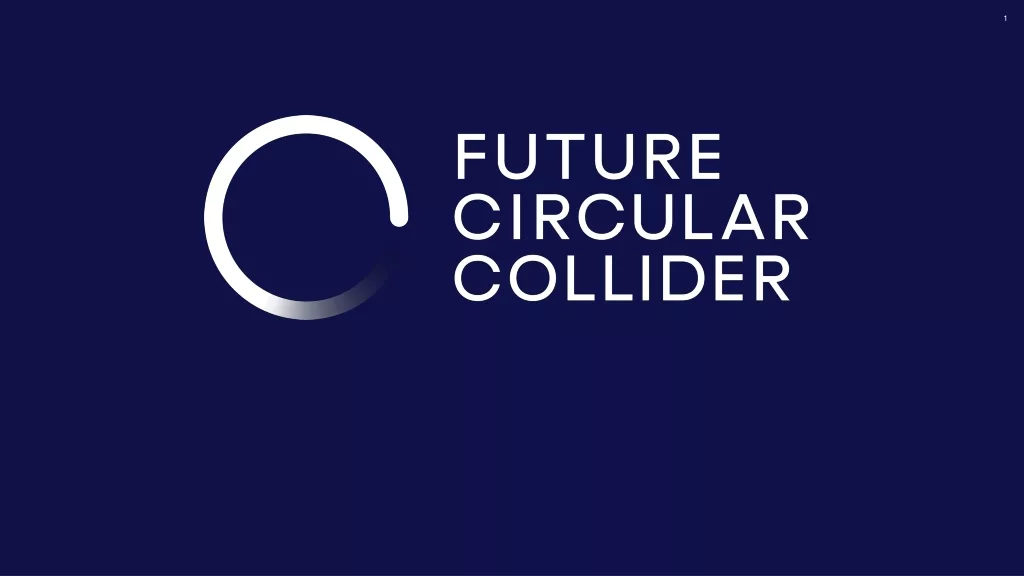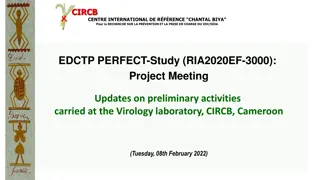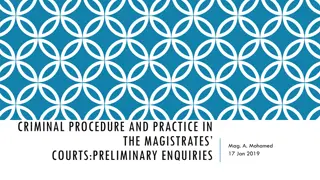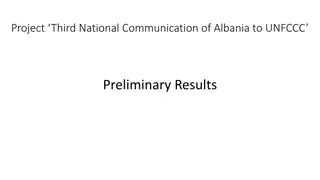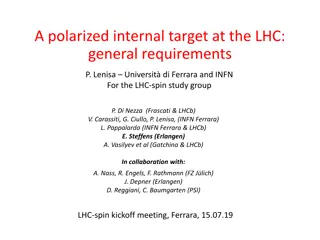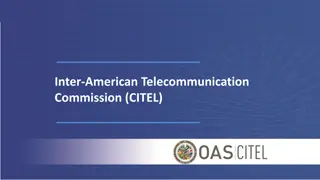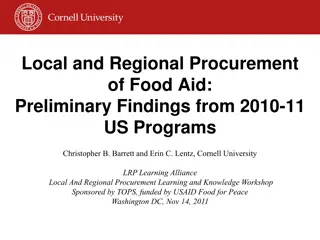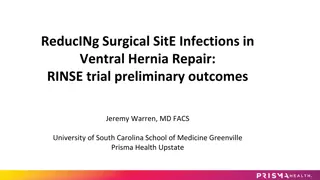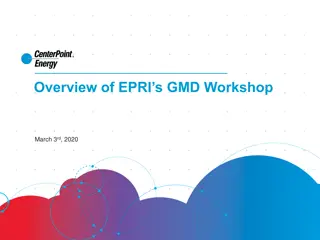
Academic & Professional Education Capacity Enhancement in Serbi
IMPRESS project aims to enhance academic and professional education capacity in Serbia's safety and security sector through strategic partnerships with the EU. Led by University of Belgrade, the project involves creating a model for educational infrastructure development, exchange programs, and legislative cooperation, with a focus on inclusivity and sustainability.
Download Presentation

Please find below an Image/Link to download the presentation.
The content on the website is provided AS IS for your information and personal use only. It may not be sold, licensed, or shared on other websites without obtaining consent from the author. If you encounter any issues during the download, it is possible that the publisher has removed the file from their server.
You are allowed to download the files provided on this website for personal or commercial use, subject to the condition that they are used lawfully. All files are the property of their respective owners.
The content on the website is provided AS IS for your information and personal use only. It may not be sold, licensed, or shared on other websites without obtaining consent from the author.
E N D
Presentation Transcript
Improving Academic and Professional Education Capacity in Serbia in the Area of Safety & Security (by Means of Strategic Partnership with the EU) - IMPRESS WP2 - PRELIMINARY MODEL PRESENTATION Prof. Dr. Petar Stanojevi University of Belgrade, Faculty of Security Studies IMPROVING ACADEMIC AND PROFESSIONAL EDUCATION CAPACITY IN SERBIA IN THE AREA OF SAFETY & SECURITY IMPRESS (10 APRIL, 2018 WORKSHOP, WP 2, FACULTY OF SECURITY STUDIES, BELGRADE) 1
Improving Academic and Professional Education Capacity in Serbia in the Area of Safety & Security (by Means of Strategic Partnership with the EU) - IMPRESS From the Project Proposal (1) WP 2 - MODEL FOR IMPROVING THE EDUCATIONAL CAPACITY IN THE AREA OF SECTOR SKILL ALLIANCE FOR SAFETY & SECURITY will be led by the University of Belgrade (UB). Associate organizations are: Stuttgart University (SU), Steinbeis University Berlin (SHB) and other Serbian participants. This Model will include universities bilateral/multilateral contracts, joint accreditations, establishing a new role of faculty innovation centres as a course providers etc. Agreement patterns and forms will be developed to fulfil requirements and to be in accordance with national and EU low. Model should be applicable in Europe and Region-wide (Dissemination, ensuring sustainability of it). Based on this model a sample educational infrastructure (curriculum, modules, courses, academic and para- academic educational activities) will be established and implemented in Serbia (WP3). Once established, the infrastructure will be used to improve the current educational capacity of the participating universities in Serbia (WP4). Model should include pathways for exchange of lecturers and students in Serbia and between Serbia and EU. Permanent joint curricula development and exchange of training materials and information are some of the targets. IMPROVING ACADEMIC AND PROFESSIONAL EDUCATION CAPACITY IN SERBIA IN THE AREA OF SAFETY & SECURITY IMPRESS (10 APRIL, 2018 WORKSHOP, WP 2, FACULTY OF SECURITY STUDIES, BELGRADE) 2
Improving Academic and Professional Education Capacity in Serbia in the Area of Safety & Security (by Means of Strategic Partnership with the EU) - IMPRESS From the Project proposal (2) Model will be presented in the Project website. All developed documents/agreements will be offered for public use. Other universities in Serbia and EU will be officially invited to join the network to extend sector skill alliance . Project leaders will appear in mass media to spread the message about existence of this development. Serbian and Eu authorities will be informed about legislative gaps that should be closed in order to accelerate cooperation inside Serbia and with EU and other partner countries. EU transparency and recognition tools will also be engaged in spreading information about achievements. Inclusion of disadvantaged social groups require it s part in the model. IMPROVING ACADEMIC AND PROFESSIONAL EDUCATION CAPACITY IN SERBIA IN THE AREA OF SAFETY & SECURITY IMPRESS (586410-EPP-1- 2017-1-RS-EPPKA2-CBHE-JP (2017-3214/001-001)) 3
Improving Academic and Professional Education Capacity in Serbia in the Area of Safety & Security (by Means of Strategic Partnership with the EU) - IMPRESS Assumptions and Risks Assumptions: It is possible to form sector skill alliance between HEI from program and partner countries. Dual diploma and joint study programs are possible Legal framework and instruments can be developed Risks: Accreditation process can be too long Legal issues cannot be resolved IMPROVING ACADEMIC AND PROFESSIONAL EDUCATION CAPACITY IN SERBIA IN THE AREA OF SAFETY & SECURITY IMPRESS (586410-EPP-1- 2017-1-RS-EPPKA2-CBHE-JP (2017-3214/001-001)) 4
Improving Academic and Professional Education Capacity in Serbia in the Area of Safety & Security (by Means of Strategic Partnership with the EU) - IMPRESS Theoretical model`s role Model, when implemented properly, should satisfy four fundamental objectives [5]: Enhance an individual's understanding of the representative system Facilitate efficient conveyance of system details between stakeholders Provide a point of reference for system designers to extract system specifications Document the system for future reference and provide a means for collaboration 5. C.H. Kung, A. Solvberg, Activity Modeling and Behavior Modeling, In: T. Ollie, H. Sol, A. Verrjin-Stuart, Proceedings of the IFIP WG 8.1 working conference on comparative review of information systems design methodologies: improving the practice. North-Holland, Amsterdam (1986), pp. 145 71 IMPROVING ACADEMIC AND PROFESSIONAL EDUCATION CAPACITY IN SERBIA IN THE AREA OF SAFETY & SECURITY IMPRESS (586410-EPP-1- 2017-1-RS-EPPKA2-CBHE-JP (2017-3214/001-001)) 5
Improving Academic and Professional Education Capacity in Serbia in the Area of Safety & Security (by Means of Strategic Partnership with the EU) - IMPRESS Model development IMPROVING ACADEMIC AND PROFESSIONAL EDUCATION CAPACITY IN SERBIA IN THE AREA OF SAFETY & SECURITY IMPRESS (586410-EPP-1- 2017-1-RS-EPPKA2-CBHE-JP (2017-3214/001-001)) 6
Improving Academic and Professional Education Capacity in Serbia in the Area of Safety & Security (by Means of Strategic Partnership with the EU) - IMPRESS Modeling Simuland: Higher Educational System (Serbian and EU) Requirements: To allow joint development and execution of study progammes or modules between Serbian and Serbian and EU partners. To innovate and create new study programmes, modules, courses and trainings To define shortcomings and limitations To allow implementation / to be executable Validation: Through fulfilment of requirements Verification: Through implementation The event-driven process chain (EPC) or Logico-linguistic modeling are thepossibleconceptual modeling techniques. IMPROVING ACADEMIC AND PROFESSIONAL EDUCATION CAPACITY IN SERBIA IN THE AREA OF SAFETY & SECURITY IMPRESS (586410-EPP-1- 2017-1-RS-EPPKA2-CBHE-JP (2017-3214/001-001)) 7
Level 8 Doctoral academic studies Doctoral academic studies 180 ESPB Level 7.2 Spec. academic studies Spec. academic studies 60 ESPB Level 7.1 Master studies Master academic studies 60 or 120 ESPB Integrated academic studies 300-360 SPB Professional academic studies 120 SPB Courses with or without ESPB Level 6.2 Spec. academic studies and Basic academic studies 240 ESPB Vocational studies 60 SPB Level 6.1 Basic studies Professional career studies 180 ESPB Basic academic studies 180 ESPB Level 4 (duration 4 years) Secondary education No legal constrains on joint cooperation and programmes from 6.1 to 8. Level 1 (duration 8 years) Primary education IMPROVING ACADEMIC AND PROFESSIONAL EDUCATION CAPACITY IN SERBIA IN THE AREA OF SAFETY & SECURITY IMPRESS (586410-EPP-1-2017-1-RS-EPPKA2-CBHE-JP (2017-3214/001-001)) 8
Improving Academic and Professional Education Capacity in Serbia in the Area of Safety & Security (by Means of Strategic Partnership with the EU) - IMPRESS Backup slides IMPROVING ACADEMIC AND PROFESSIONAL EDUCATION CAPACITY IN SERBIA IN THE AREA OF SAFETY & SECURITY IMPRESS (586410-EPP-1- 2017-1-RS-EPPKA2-CBHE-JP (2017-3214/001-001)) 9
Improving Academic and Professional Education Capacity in Serbia in the Area of Safety & Security (by Means of Strategic Partnership with the EU) - IMPRESS Model: Definition (1) Scientific modelling is a scientific activity, the aim of which is to make a particular part or feature of the world easier to understand, define, quantify, visualize, or simulate by referencing it to existing and usually commonly accepted knowledge [1,2]. It requires selecting and identifying relevant aspects of a situation in the real world and then using different types of models for different aims, such as conceptual models to better understand, operational models to operationalize, mathematical models to quantify, and graphical models to visualize the subject. Modelling is an essential and inseparable part of many scientific disciplines, each of which have their own ideas about specific types of modelling. A scientific model seeks to represent empirical objects, phenomena, and physical processes in a logical and objective way. All models are in simulacra, that is, simplified reflections of reality that, despite being approximations, can be extremely useful. [3] 1. Cartwright, Nancy. 1983. How the Laws of Physics Lie. Oxford University Press 2. Hacking, Ian. 1983. Representing and Intervening. Introductory Topics in the Philosophy of Natural Science. Cambridge University Press 3. Box, George E.P. & Draper, N.R. (1987). [Empirical Model-Building and Response Surfaces.] Wiley. p. 424 IMPROVING ACADEMIC AND PROFESSIONAL EDUCATION CAPACITY IN SERBIA IN THE AREA OF SAFETY & SECURITY IMPRESS (586410-EPP-1- 2017-1-RS-EPPKA2-CBHE-JP (2017-3214/001-001)) 10
Model: Definition (2) Within modelling and simulation, a model is a task-driven, purposeful simplification and abstraction of a perception of reality, shaped by physical, legal, and cognitive constraints [4]. It is task-driven, because a model is captured with a certain question or task in mind. Simplifications leave all the known and observed entities and their relation out that are not important for the task. Abstraction aggregates information that is important, but not needed in the same detail as the object of interest. Both activities, simplification and abstraction, are done purposefully. However, they are done based on a perception of reality. This perception is already a model in itself, as it comes with a physical constraint. There are also constraints on what we are able to legally observe with our current tools and methods, and cognitive constraints which limit what we are able to explain with our current theories. This model comprises the concepts, their behavior, and their relations in formal form and is often referred to as a conceptual model. Conceptual models are often abstractions of things in the real world whether physical or social. The term conceptual model is normal. It could mean "a model of concept" or it could mean "a model that is conceptual." A distinction can be made between what models are and what models are models of. Models are, mostly, intended to be models of real world states of affairs. The value of a model is usually directly proportional to how well it corresponds to a past, present, future, actual or potential state of affairs. A model of a concept is quite different because in order to be a good model it need not have this real world correspondence. Conceptual modeling is the activity of formally describing some aspects of the physical and social world around us for the purposes of understanding and communication. 4. Tolk, A. (2015). Learning something right from models that are wrong Epistemology of Simulation. In Yilmaz, L. (Ed.) Concepts and Methodologies in Modeling and Simulation. Springer Verlag. pp. 87 106 IMPROVING ACADEMIC AND PROFESSIONAL EDUCATION CAPACITY IN SERBIA IN THE AREA OF SAFETY & SECURITY IMPRESS (586410-EPP-1- 2017-1-RS-EPPKA2-CBHE-JP (2017-3214/001-001)) 11
Improving Academic and Professional Education Capacity in Serbia in the Area of Safety & Security (by Means of Strategic Partnership with the EU) - IMPRESS THANK YOU FOR YOUR ATTENTION IMPROVING ACADEMIC AND PROFESSIONAL EDUCATION CAPACITY IN SERBIA IN THE AREA OF SAFETY & SECURITY IMPRESS (586410-EPP-1- 2017-1-RS-EPPKA2-CBHE-JP (2017-3214/001-001)) 12

